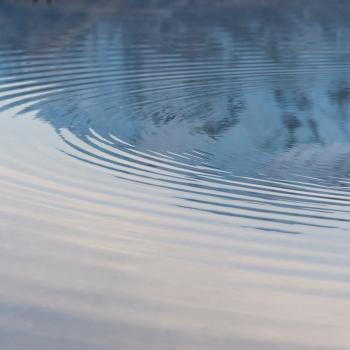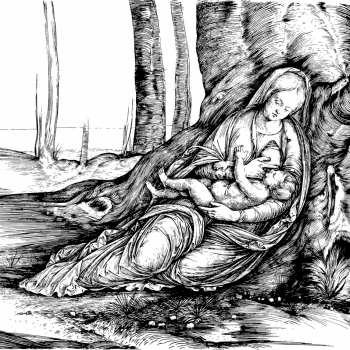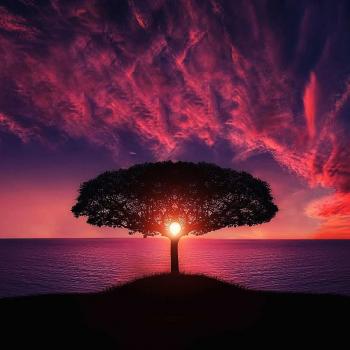It’s amazing what a long enough airplane flight will drive a person to. My wife Amy, our three kids, and I were midway from Boston to the Bay Area, and I had exhausted my interest in the books I brought. My daughter had a curious game on her iPod called “Plants versus Zombies,” which I admit had held my attention for a few hours during our time in the Northeast, but even that had lost its appeal.
My younger son had fallen asleep on my lap, sort of curled like a dog, so I opened up a spiral notebook, and used him as a table to write on. My daughter and I first brainstormed a list of superpowers, like flying and shape-shifting, and when she returned to reading Little Women, I decided I’d think of all the possible things that make a person happy and see what happened. My list numbered sixteen items, including “winning a game,” “listening to music,” “hanging out with friends,” and “runner’s high.”
When I finished the list, I grouped my examples into four categories or basic sources of human happiness: 1) health and general well-being, a source that usually becomes strongly apparent when we’re ill; 2) aesthetic pleasures, like listening to music or enjoying a skyline of trees against a sunset; 3) a sense of accomplishment, like you experience when you finish a major task; and 4) relationships with other people and perhaps animals too.
Hinduism also groups sources of happiness into a set of four, but it matches its four sources of happiness with four general stages in human life. During the first stage, young people, the “students,” seek physical pleasure and immediate gratification; delayed gratification and fulfilling long-term goals require considerable discipline in youth. During the second stage, the “householder” begins to focus on material success. She or he pursues the career position, purchases the house, raises the family, and secretly longs for the approval of family, friends, and coworkers during the annual holiday cocktail party. At the third stage, the curiously labeled “forest-dweller,” marked by the birth of the first grandchild, begins the retreat from self-centeredness while his or her concern for the wider community grows. Many people in the West resist this stage and try to cling to the satisfactions of a materially successful life, but for many more the light of the spiritual journey burns bright, and the way opens for the fourth stage: the ascetic, the “letting-go” in preparation for the transition out of this world.
Now when I open up any issue of The New York Times, The Economist, The San Francisco Chronicle, or even Reuters News on the Internet, I’m inevitably barraged with bad news. The disparity in wealth among nations increases while the natural world continues to degrade because of profoundly shortsighted policy decisions, corporate greed, and mindless first-world consumption. If only we could figure out what’s missing in the life of the Wall Street profit-seeker and the folks on the board of investors of the corporation he works for, what’s missing in the life of the prison warden and the convict he contains, what’s missing in the life of the mega-store retail salesperson and the customer she attends to, all of us only chasing after our personal dreams and isolated desires, largely mindless of the implications for the world.
Look through most compendiums of the world’s religious traditions and you’ll notice certain themes: one of the major ones is denial of self, denial of desires. But I’d like to offer this: seeking the deepest joy on the surface appears to entail denial of mundane pleasures and “selfish desires,” but, like the transubstantiation of the Eucharistic bread and wine, we look past the surface appearances to the substance, now transfigured into something divine.
The question is: of what does it consist to “seek our deepest joy”? A couple years ago, four friends and I headed to the Middle Fork of the American River for a rafting trip. The afternoon prior to the actual rafting, we set up camp along the river and decided to swim. Once in the water, two of my more experienced friends showed me how to raft the river without boat or life jacket. You put your feet out straight in front of you, toes out of the water, and hold your bottom up as high as you can. You gently paddle and steer with your arms, mostly letting the current take you. When you encounter rapids, you insure you’ve got the air supply to survive the occasional pull below the surface. The undertaking demands a surprising amount of surrender to the current. Resisting the water current is out of the question; trust is essential. You have to keep your head up and eyes ahead. It’s not unlike taking a motorcycle into a sweeping curve at high speed: keep your eyes always on the farthest point of the curve, on the horizon, and trust the physics.
I use these examples because I think in the early 21st century we are hell-bent on trying to control everything. We expect things to be on time; we expect things to work when we push a button; we expect the word “fine” when we ask, “How are you?” But these expectations really derive from an unwillingness to surrender in trust to Life itself. Even something seemingly noble, like the desire to rectify an injustice, may arise from an unwillingness to move with the river of our lives toward that which remains perpetually on the horizon, what Siddhartha Gautama called “the Other Shore.”
But what is this Other Shore?
A few weeks ago I spoke with a class of high school juniors about these same sources of happiness, and I listed the four sources I came up with on the board, challenging them to name anything that would not fit my four categories. Now I was astonished when one student, a fellow with learning differences who doesn’t usually score too well on tests, offered this: what about a general sense of gratitude for just being alive? I was taken aback: this student had suggested something that transcended the categories, or rather, underlay them all.
Our health is transitory; experiences of beauty are ephemeral; accolades and accomplishments are fleeting; even our closest friendships and most intimate relationships are fated to end with bodily death. In each and every case, the object of our enjoyment is separate from us, outside of us, across the chasm of duality that characterizes almost all of our lived experience.
So we ask: If no source of happiness in this world can outlast the impermanence that characterizes this reality, then what have we to sustain us? If we refrain from letting our minds get lost in the turmoil of future expectations or the glut of emotionally charged past memories, and instead allow our minds to reside in the present moment, what will we find there? Or rather Whom will we find here?
The content of mindfulness, the visceral experience that accompanies mindfulness, is gratitude for life and all those fleeting hues of the vicissitudes that color our existence.
Like most Bay Area folk, I cringe when I hear tea-party evangelicals throwing around phrases like “Jesus saves.” However, the Franciscan writer Richard Rohr offered, I think, an insightful interpretation of the word “save” when he suggested that when we identify with transitory sources of happiness, our very “selves” are constantly lost. But when we identify ourselves with that source of joy that abides, that source that does not pass away, but that is the very current of life itself, then we are “saved,” much in the sense that data on a computer is saved, because our selves no longer slip away with the things “of this world,” with which we are so easily inclined to identify.
This, then, is what I believe Paul spoke of in the eighth chapter of his letter to the Romans, when he wrote, “Creation itself would be set free from slavery to corruption and share in the glorious freedom of the Children of God.” Our minds abide in the present; our hearts fill with Eukharistia, gratitude; and each one of us knows ourselves as what we were all along: beloved daughters and sons of God, the only lasting joy, the horizon that is the only true freedom.













